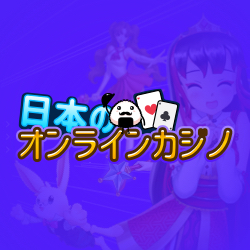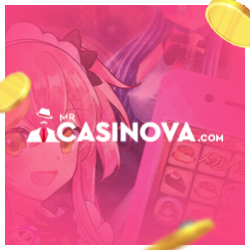Final Fantasy XIII-2 PS3 Review
Publisher – Square Enix – Developer – Square Enix – Genre – RPG – Players – 1 – Age Rating – 12+ – Other console/handheld formats – PS3
A lot of Final Fantasy fans weren’t very enamoured with the 13th iteration of the series, with a major reason behind the lack of love being that many genre staples were omitted, such as towns, NPC interaction and as for the exploration aspect, well there’s probably more potential for adventure up your garden path than what much of the game had to offer.
Final Fantasy XIII-2 is the second true sequel of the series, so it shares Final Fantasy XIII’s world and is set following the events featured in that game. It also retains many of its predecessor’s mechanics, though Square Enix’s intended mission was to get back on the side of dismayed fans by putting together a game that reintroduces much of the things that were unceremoniously discarded in XIII, but at the same time it also brings some interesting elements of its own to the series.
Unlike Final Fantasy X-2, which as a contrast to its dour predecessor was all cheery, Final Fantasy XIII-2, is similarly to XIII, dark in its overall tone. Whilst the opening events feature Lightning (who was the closest that Final Fantasy XIII had to a primary protagonist), for most of the game however you’ll take charge of Serah as well as a new character, Noel, both of which are likeable enough and new guy Noel has a reasonably engaging background story, even though he’s yet another JRPG character with a fuzzy memory. As likeable as both characters are, they’re still however some distance from being the most memorable that the series has had to offer in its expansive history.
The narrative is fairly self contained and there’s a handy recap which is not only useful to refresh memories of XIII players, but also allows newcomers to this particular universe to get better acquainted with it, should they feel the need to. Because of appearances by many familiar faces and many references throughout, those that played Final Fantasy XIII will without a doubt get more from the game from a story standpoint than those that haven’t.
Final Fantasy XIII’s story was widely regarded as a weakness. It was nonsensical and, to truly follow it, most had to keep referring to the datalog that helpfully told you what all this Fal’Cie and L’Cie nonsense was that the characters kept speaking of. Thankfully Final Fantasy XIII-2’s story, whilst occasionally convoluted, is far more straightforward, though for a franchise that used to be dependable in offering consistently strong storytelling, it’s still a bit hit and miss. It’s all about time travel, as Serah and Noel travel through time to attempt to find not only Lightning, but attempt to save the world from destruction at the same time. It’s an entertaining enough and solidly acted story, whilst time travel has allowed for some intriguing plot points. It’s also helped no end by an intriguing and memorable antagonist, something that XIII was sorely lacking in.
In a more typically western slice of design, you’ll also occasionally get choices, your decisions of which can often steer conversations in various directions, though it’s half hearted in comparison to other games, it’s satisfying enough for this particular franchise.
The time travel aspect is well incorporated in a gameplay sense as well, and this in itself solves the linearity issue of its predecessor, offering an interesting structure to the game and allowing you some degree of freedom in your route through the game. Many areas have gates, of which you are able to unlock with artefacts, these open up further areas to explore, often alternate time periods of previously explored places, and it’s regularly left up to you to decide what order to unlock them in and not all are required to be opened in order to reach the end of the game. Gates can also be closed with seals as well, giving you the chance to replay sections for different rewards and such.
Most locations offer a reasonable level of exploration too, feeling significantly less like elaborately dressed corridors as they often did in its predecessor. You also have Mog, who can reveal items blocked in the timeline and can even be tossed through the air to retrieve out of reach items.
Side quests are also prevalent and whilst they’re largely mundane fetch quests, there’s occasionally a good use of the time travel aspect. Most side quests will reward you with fragments that will grant you Crystarium points to grow your characters abilities. There are 160 of such fragments to track down, finding them all is a compulsive distraction and doing everything will grant an otherwise short game a lot of longevity.
Towns have also returned and, whilst there’s NPC’s to chat with, they still don’t feel like typical RPG towns. You’re not able to visit shops and houses are also disappointedly completely out of bounds to you. Purchasing equipment is carried out through the amusingly enthusiastic and mildly irritating Chocolina, who appears both in towns and other areas.
Unlike Final Fantasy XIII, there are no monsters wandering around the world and instead the game reintroduces random battles to the series. This isn’t as much as a regression as you might think it would be though, as whenever you come into contact with enemies they’ll visibly appear, giving you the opportunity to dodge them before the battle even has a chance to begin, granting you the ability to pick and choose your battles resulting in somewhat of a halfway house between random battles and visible monsters.
The combat system on the other hand is the same as XIII’s, though in a tweaked form. So Paradigm’s can be freely switched between whilst fighting, allowing you to change each characters role to adapt to the situation. The stagger bar has also been retained, this primarily comes into play during boss encounters, allowing you to by delivering so much damage, stagger them to allow your attacks to deal heavier damage for a limited period of time.
It’s a fine idea for a battle system, though it’s badly let down by its severe lack of challenge, which is even more of an issue than it was in Final Fantasy XIII, which in itself was rarely a terribly difficult game, leaving the system’s potential for strategic focus largely wasted though on the good side, most battles rarely drag on and are won in a flash.
Cinematic Actions on the other hand are a fresh addition, they’re QTE’s in all but name and are an inoffensive but needless addition – neither adding a lot in gameplay terms nor having a negative effect, they’re just there really.
The most substantial new addition on a combat level is the fact that there’s a monster capture element. Noel and Serah are the only permanent human team members, whilst the third slot is taken up by a monster. There are 150 monsters to be captured, only one of which can act in battle at a time, though by using different paradigm’s you are able to instantly bring in another to make use of their particular skill set. These grow through the Crystarium just as Noel and do, though instead of points you’ll use items to enhance them. Less used monsters can be infused with favourites, which gets rid of them, but enhances the receiver in the process. You are also able to equip monsters with adornments, merely for cosmetic purpose, though it’s somewhat amusing seeing a fearsome beast donning a funny hat, and it’s a worthy inclusion for that reason alone.
In a visual sense, Final Fantasy XII-2 is somewhat disappointing, which isn’t to say that it isn’t a lovely looking game. It has great art direction and world design and, with a new fully controllable camera, you’re able to get a better look at it. Unfortunately its framerate struggles and the lavish FMV sequences that Square Enix has often used to tell more important plot points are distressingly sparse in comparison to other iterations of the series that had them in abundance.
Final Fantasy XIII-2 is superior to its predecessor in many ways, though its lack of difficulty, and towns that are still somewhat lacking in their execution in comparison to earlier iterations of the series, as well as a narrative that by series standards isn’t always compelling means that what we’re left with is an impressive and engaging game, but one that, without its flaws, could easily have been a full return rather than a few steps back towards the glory days of one of gaming’s most famous and cherished of franchises.
8/10









